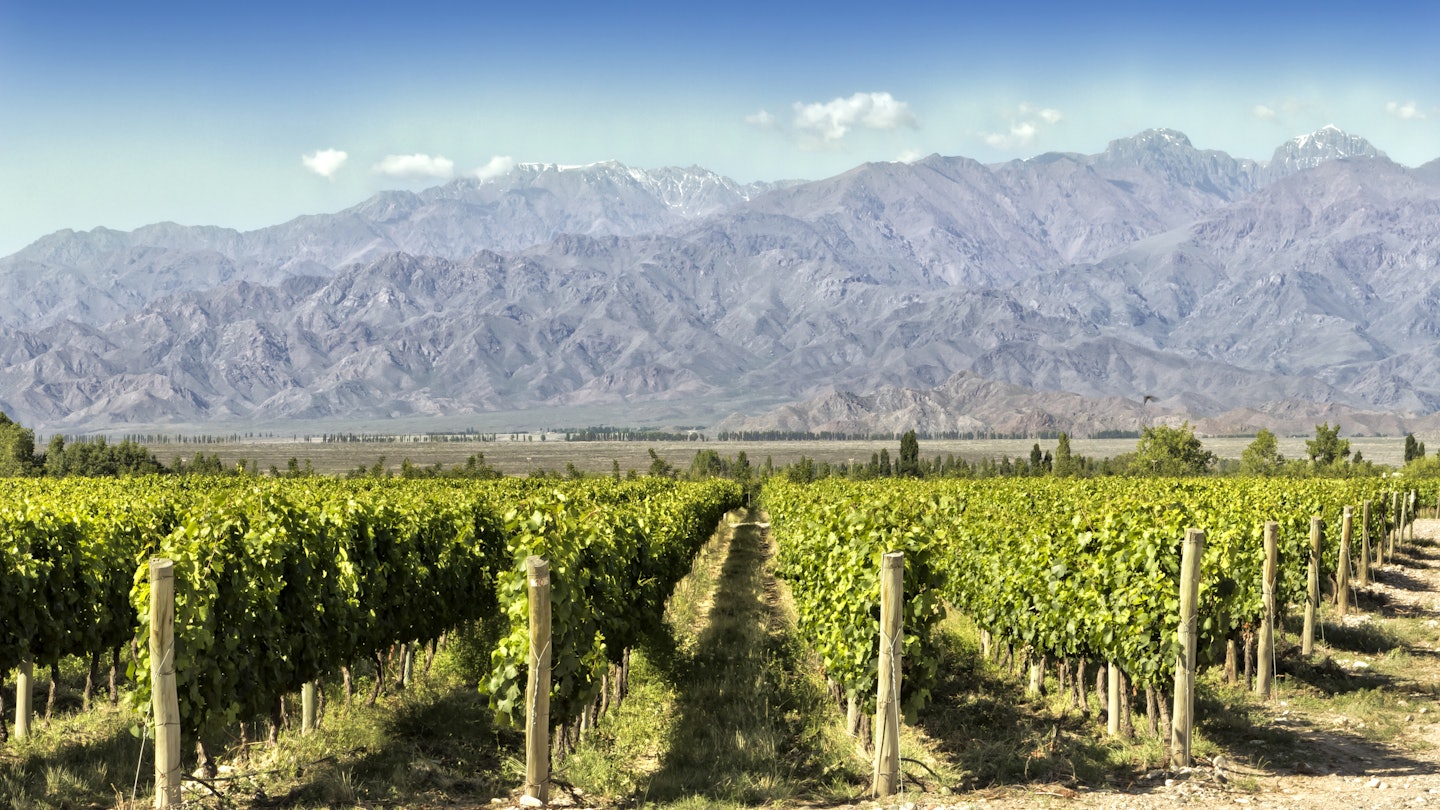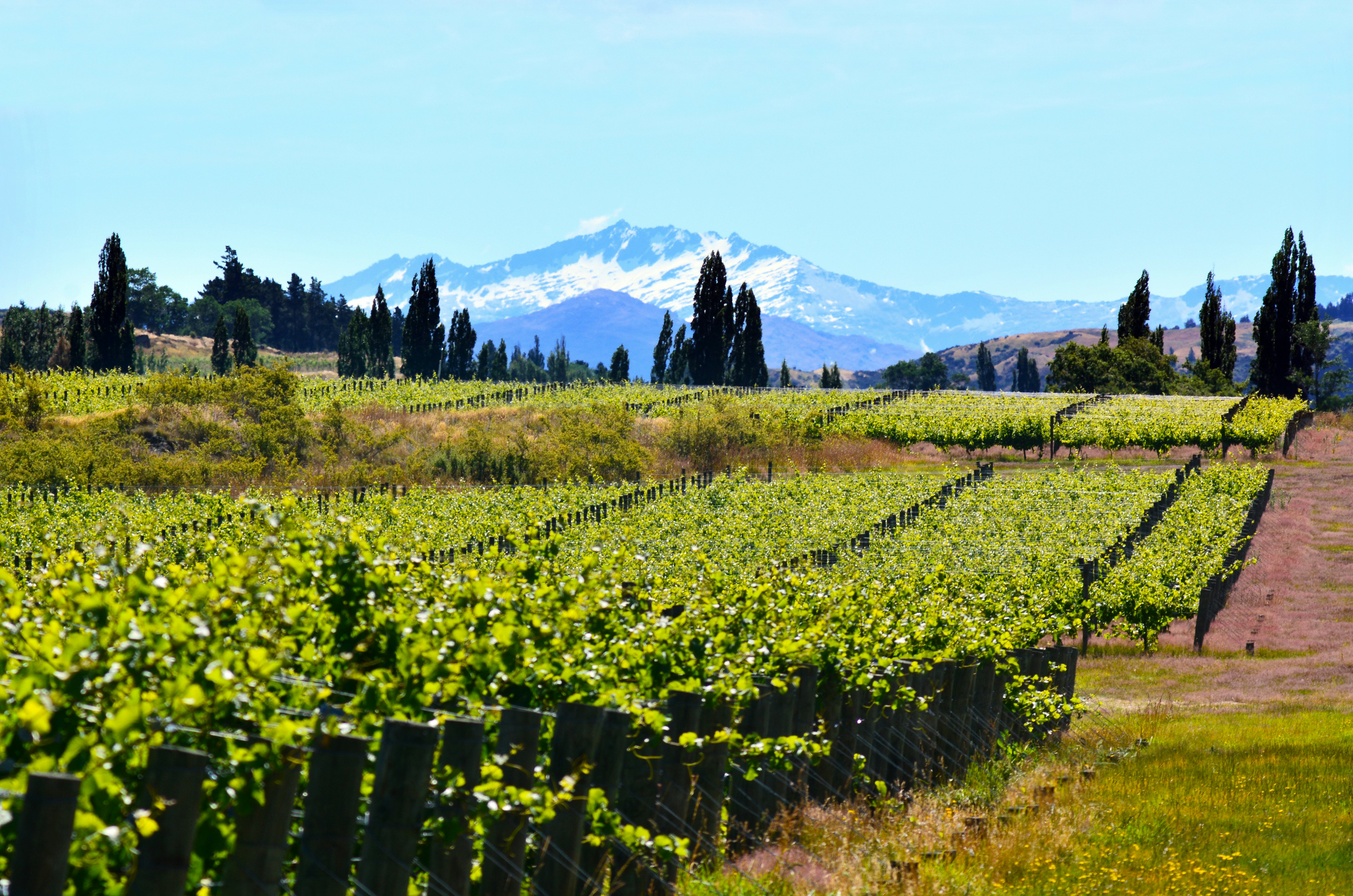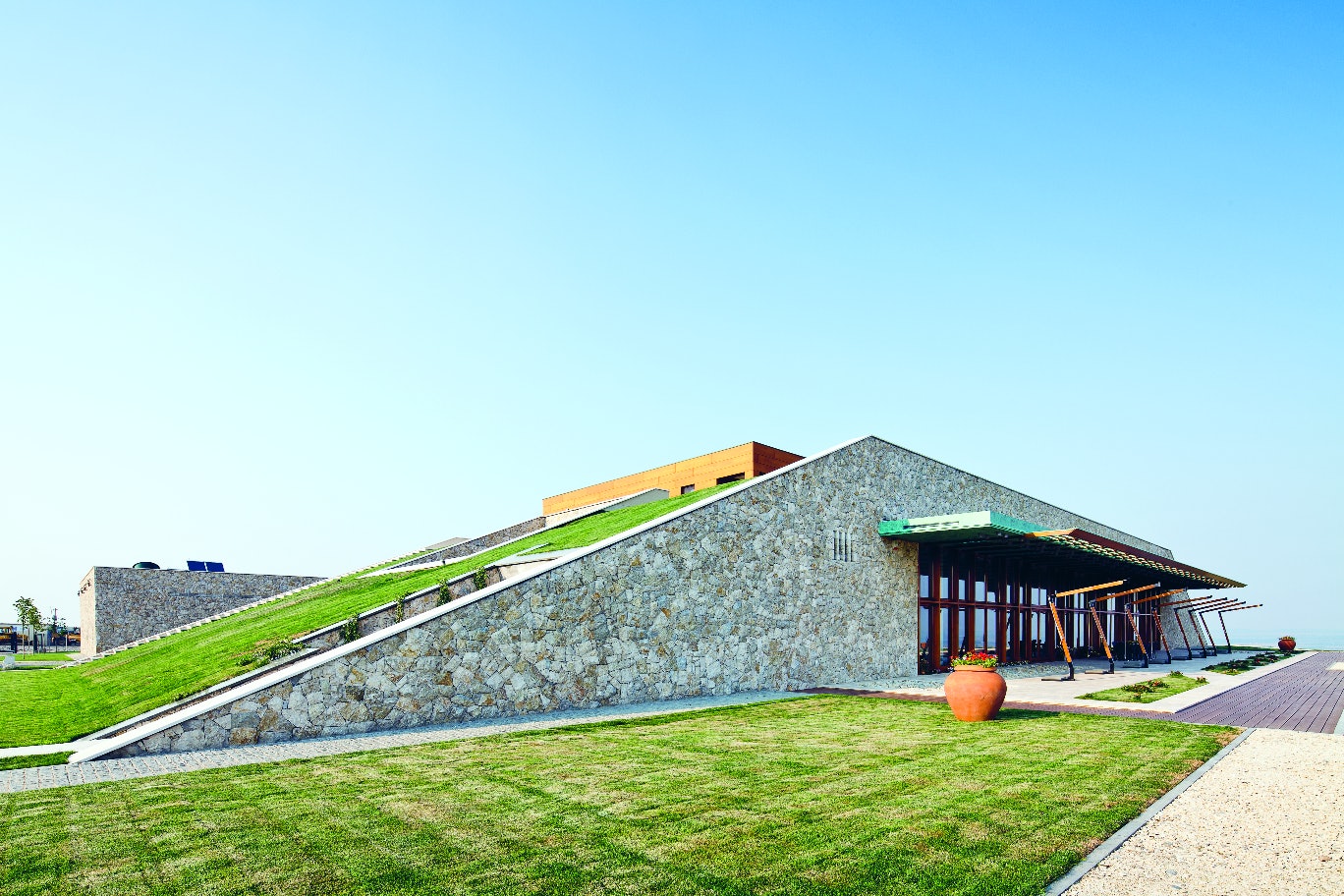
The 30 best countries, cities and regions to visit in 2025

Springtime in the vineyards at foot of the Andes in Mendoza, Argentina. © Edsel Querini/Getty Images
Wine-touring is so much more than tastings in a vineyard: it gives you a personal introduction to a flavor by knowledgeable winemakers in the place it was created.
Maybe you've enjoyed some Pinot Noir in France's Burgundy and sunk some Chardonnay in Australia's Yarra Valley or California's Sonoma, but there are lesser-known vineyards, some centuries old, producing some incredible wines that should also be on your radar. From the Fetească varieties grown in Drăgăşani, Romania, to the family-owned vineyards of Empordà, Spain, plan your trip to visit these special producers with Lonely Planet’s brand-new edition of Wine Trails. Covering 52 of the world’s greatest wine regions, this book offers weekend-long itineraries designed by expert writers, including wine buyers, reviewers and sommeliers.
Here are a few of the most intriguing regions that show why tasting wine in the place it was made can be a revelation.
Chances are you’ve noticed that right now Argentina is hot on the international wine scene. You can’t glance at a wine list without seeing the word "Malbec", or turn on the radio without hearing a chef talk about the best-value Argentinian bottles for your summer barbecue. Even Argentinian people didn’t realise how fantastic their wine could be until relatively recently, though it’s safe to say they were always fully aware of the natural beauty of Mendoza.
The nation’s wine-producing capital occupies a spectacular stretch of sun-drenched landscape at the foot of the snowcapped Andes. It’s a South American playground for innovation, the meeting point between tradition and new technology. Raise your glass: here in Mendoza, it’s a brave new world.
Planning tip: Mendoza El Plumerillo is the nearest major airport, 8km (5 miles) from Mendoza.

Central Otago, famed for sublime alpine scenery and the energetic resort town of Queenstown, is also the setting for some world-class winemaking. The region’s wild landscapes make up the world’s southernmost wine region through the deep valleys and basins of six subregions – Gibbston, Bannockburn, Cromwell Basin, Wanaka, Bendigo and Alexandra.
The few vines planted back in 1864 were an early forerunner of an industry that has burgeoned since the mid-1990s. The scene remains largely in the hands of friendly boutique enterprises, with winemakers experimenting with a terroir not yet fully understood.
The local soils have proved excellent for Pinot Noir and Central Otago is lauded as one of the best places outside Burgundy for cultivating this notoriously fickle grape. It would take a good two days’ touring to get a comprehensive taste of the place, with around 30 wineries regularly open to visitors, and many more by appointment.
Planning tip: Visitors short on time could focus on the Gibbston Valley, where cycle touring is available.

Cape winemaking has long been symbolized by the grand old established estates in Stellenbosch, Franschhoek and Constantia, where the first vines were planted on the African continent as far back as 1659. But today there are many regions farther afield in the Cape that offer a refreshing alternative for sheer variety. These smaller family-run wineries, offering a friendly welcome, are found in the adjoining regions of Wellington, Swartland and Tulbagh.
Winery tastings here may well mean a face-to-face encounter with the winemaker. Swartland, especially, is home to a band of cutting-edge vintners with small, manageable estates, many of whom are experimenting with biodynamic production. And vineyard owners here are some of the most progressive in the Cape, with the Black workforce genuinely having a voice in the running of an estate.
Planning tip: Cape Town is the nearest major airport, 70km (43 miles) from Wellington.

South Australia boasts 18 distinct wine-growing regions and was recently bestowed the honor of being one of the world's 11 Great Wine Capitals of the World. A mere half-hour drive from the state's bohemian capital Adelaide and you'll be in the heart of the gorgeous Adelaide Hills. In the 19th century, this undulating patch of South Australia was adopted by Germans and Lutherans fleeing persecution and there's a certain European feel to the region, with its winding roads and quaint towns like Hahndorf, Stirling and Lobethal. Arguably one of Australia's best cool-climate wine regions, this is a young wine region that's home to over 60 wineries — many of which are upcoming small-scale producers. One of the region's big attractions is Shaw & Smith, whose buttery Chardonnay is world-renowned, delivering an almost perfect cellar door experience. Chardonnay May sees cellar doors across the region throw open their doors to celebrate this well-loved white. In October, Sparkling Spring is a three-day salute to the local fizz.
Planning tip: Although the region may be close to the city it's best explored by renting a car. The Adelaide airport is the closest entry point to the region.

The Georgian wine experience is like no other. An 8000-year-old clay wine jar unearthed here in 2017 is the oldest-known relic of winemaking. Put another way, by the time the ancient Greeks were stomping their first grapes, the Georgians had been at it for millennia. Traditional winemaking technology has changed surprisingly little since antiquity. Grapes are still harvested by hand and foot-pressed in the hollowed-out trunks of ancient trees. The juice flows into underground clay pots where it ferments and matures with minimal manipulation.
Kakheti is the most important Georgian wine region. The small city of Sighnaghi is Kakheti’s cultural capital, and it’s popular place to base yourself with wineries lining its cobblestoned streets. As you’re touring, remember that Kakheti’s greatest wines tend not to be found in the open, but in villagers’ backyards, buried underground, awaiting release.
Planning tip: Kakheti is two hours' drive east of Georgia's capital, Tbilisi.

Mountains, snow, endless forests and piercing turquoise lakes are far-removed from the kind of scenery most people associate
with winegrowing, but that is what you'll find in Canada's Okanagan Valley. Despite the icy winters, a vast array of grape varieties succeed here, largely thanks to the hot summers. There’s another benefit to the northerly location: short growing seasons are compensated for by long sunlight hours, so grapes have no problem reaching maturity. Add in the differentiation between day and night and you have wines that retain great freshness and thus zingy acidity – a signature of the Okanagan.
The wine industry and vines here are young, but growing fast; in 1984 there were 13 wineries in BC, today there are over 180 in the Okanagan alone. This means fewer rules with regards to planting (more than 230 grape varieties are sown) and wine styles, and all the more fun for wine fans.
Planning tip: Flights from Vancouver to Kelowna or Penticton take less than an hour.

English wine was long a laughing stock, not least among the French, for being too thin, too sour or over-sweetened. But in the last 20 years, the South Downs region has been the source of some excellent sparkling wines. In truth, England’s wineries are spread out over quite a distance, from Kent to Gloucestershire, and a tour taking in all of them would be impracticable. But there are a handful of vineyards concentrated in tranquil Hampshire (and neighbouring West Sussex) that together make a weekend exploring English wine, and some of the region’s other attractions, enjoyable and something of a revelation. Names to look out for include Hattingley Valley, Cottonworth Wines and Raimes.
Planning tip: Southampton and London Gatwick are the closest airports but the region is only an hour from London by train.

Romania is Europe's fifth-biggest winegrower and produces more wine than New Zealand, though it is nowhere near as famous. This is wine country through and through, with grapevines grown just about everywhere. Wine has been renowned in Drăgăşani since the 16th century, and today, is home to some of Romania’s most innovative small family wineries, offering a warm and very personal welcome, and situated conveniently close together to form an easy wine trail. Travelers will find familiar grapes such as Merlot, Pinot Noir and Pinot Grigio, but more intriguing are Romania’s local varieties, including the widespread Fetească group, as well as the rare white grape Crâmpoşie Selecţionată, and reds such as Novac and Negru de Drăgăşani, many of which are grown nowhere else in the world.
Planning tip: The nearest airport is 70km (43 miles) from Drăgăşani at Craiova. Bucharest has more flights but is a 2.5–3hr drive away (200km/124 miles).

Revolving around the fantastic city of Girona in northeast Spain is the up-and-coming wine region of Empordà. The wine itself doesn’t receive the attention of Spain’s superstar regions such as Priorat or Rioja, and because much of it is sold locally to restaurants in Girona and Barcelona, it’s rare to find in other countries. But the region does have a fascinating history, traditions and a wide range of mostly family-owned wineries to discover, from boutique to blockbuster. Take a sensory journey through the darkened barrel room at the Mas Llunes winery in Garriguella or head to the beautiful coastal town of Cadaqués, where grazing sheep are used at Martín Faixó instead of tractors to help reduce the winery's impact on the enviroment.
Planning tip: You'll need a car to reach the wineries in the foothills of the Pyrenees to the north and get all the way to the coast near Pals. Both Barcelona and Girona have international airports and it’s a fast 40-minute train ride between the cities.

The Walla Walla Valley has always been known for its agriculture, but three decades ago the valley and the town were struggling. Then the grape vines arrived and today, with its enticing mix of tasting rooms, charming places to eat and comfortable B&Bs, this is one of Washington's most celebrated wine regions. If you’re in the market for world-class Syrah, the Rocks District of Milton-Freewater AVA on the Oregon side of the valley has become one of the new hot spots. While tasting through the region, be sure to allow some time to enjoy a walk around the town of Walla Walla itself, which has developed a justified reputation for good wine and food – some of the best chefs in the state have relocated to open restaurants here.
Planning tip: Fly directly into Walla Walla regional airport, or drive 4 hours east over the Cascade Mountains from Seattle.